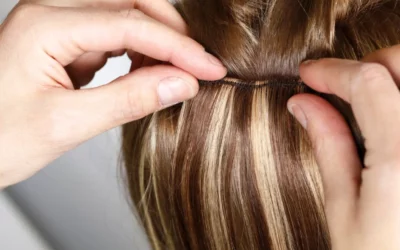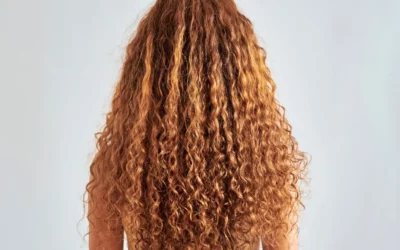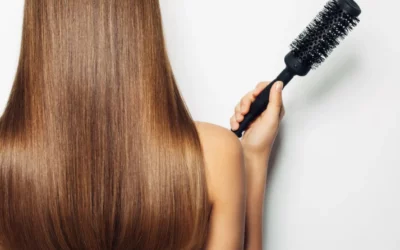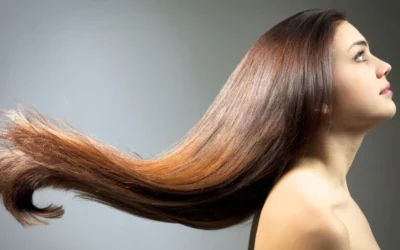Hair extensions are a popular choice for those looking to enhance their hair’s length and volume. This article serves as your ultimate guide to understanding the Average Cost of Hair Extensions.
We’ll dive into the types, installation methods, factors that influence pricing, maintenance, and tips for budgeting.
The Many Faces of Hair Extensions
Before we delve into the cost aspects, let’s explore the various types of hair extensions available. Hair extensions come in different styles, each with its own unique characteristics:
Clip-In Hair Extensions
Clip-in hair extensions are the most user-friendly option. They’re affordable and can be easily attached and removed, making them suitable for occasional use or daily transformations.
Tape-In Hair Extensions
Tape-in hair extensions are semi-permanent and provide a natural look and feel. They are attached using adhesive tapes that blend seamlessly with your natural hair.
Weave or Sew-In Hair Extensions
Weave or sew-in hair extensions involve braiding your natural hair and sewing the extensions into the braids. This method offers longevity and versatility in styling.
Micro Link Hair Extensions
Micro link hair extensions, also known as microbead or micro-ring extensions, are attached using small metal beads. They are gentle and do not require heat or glue.
Fusion Hair Extensions
Fusion hair extensions are bonded to your natural hair using keratin glue, providing a seamless and long-lasting solution for hair extensions.
Factors Influencing the Cost of Hair Extensions
The cost of hair extensions can vary significantly due to various factors:
Hair Type
The type of hair used for the extensions plays a significant role in pricing. Human hair is typically more expensive than synthetic hair due to its natural look and feel.
Length
The length of the extensions is a crucial determinant of cost. Longer extensions require more hair, resulting in a higher price.
Quality
The quality of the hair extensions is a key factor in pricing. High-quality extensions are more durable and offer a more natural look, but they tend to be pricier.
Installation Method
Certain installation methods, such as tape-in or fusion extensions, may require professional installation, adding to the overall cost.
Maintenance
Regular maintenance appointments are essential for keeping your extensions in top condition. Budgeting for these appointments is crucial to ensure the longevity and quality of your extensions.
Cost Breakdown of Hair Extension Types
Let’s explore the cost of different types of hair extensions to provide you with a clearer understanding of what to expect:
Clip-In Hair Extensions
Clip-in hair extensions are one of the most budget-friendly options, with prices ranging from $50 to $200. These extensions are reusable, making them a cost-effective choice.
Tape-In Hair Extensions
Tape-in extensions typically cost between $200 and $800, including the cost of professional installation. They require adjustments every 6-8 weeks to maintain their quality.
Weave or Sew-In Hair Extensions
Weave or sew-in extensions are relatively affordable, starting at around $200 and going up to $600 or more, depending on the type of hair used and the desired length.
Micro Link Hair Extensions
Micro link extensions may cost between $300 and $1,000. They offer durability and a natural look but require maintenance every 6-8 weeks.
Fusion Hair Extensions
Fusion hair extensions are among the pricier options, with costs ranging from $500 to $2,000 or more, depending on the quality of the hair and the stylist’s expertise.
Additional Costs to Consider
When budgeting for hair extensions, don’t forget to account for these additional expenses:
Stylist Fees
Professional installation and adjustments are necessary for certain types of extensions. Factor in the cost of stylist fees, which can vary based on their expertise and location.
Maintenance
Regular maintenance appointments are essential for keeping your extensions in top condition. Be prepared for these recurring costs every few weeks or months.
Products
Invest in high-quality, sulfate-free hair care products to ensure the longevity of your extensions. These products may add to your overall cost.
Pros and Cons of Different Hair Extension Types
To help you make an informed decision, let’s explore the pros and cons of the most common hair extension types.
Clip-In Hair Extensions
Pros:
Affordability: Clip-in hair extensions are budget-friendly and suitable for occasional use.
Easy Application: They are user-friendly and can be attached and removed without professional assistance.
Reusability: Clip-in extensions can be reused, offering value for the price.
Cons:
Temporary: They are not suitable for long-term wear and need to be removed daily.
Limited Hairstyles: Certain complex hairstyles may be challenging to achieve with clip-ins.
Visible Clips: Clips can be visible if not applied correctly, potentially compromising a natural look.
Tape-In Hair Extensions
Pros:
Semi-Permanent: Tape-in extensions provide a semi-permanent solution, lasting around 6-8 weeks before adjustments are needed.
Natural Look and Feel: These extensions offer a natural appearance and comfortable feel.
Easy Maintenance: Maintenance is relatively straightforward, with adjustments required every few weeks.
Cons:
Professional Installation: Tape-in extensions require professional installation, which adds to the overall cost.
Regular Adjustments: Ongoing adjustments are necessary for maintaining tape-ins, incurring additional costs.
Risk of Damage: Incorrect removal can potentially damage natural hair due to the adhesive used.
Weave or Sew-In Hair Extensions
Pros:
Affordability: Weave or sew-in extensions are often more budget-friendly.
Versatile Styling: These extensions offer versatility in styling, from straight to curly and beyond.
Cons:
Regular Maintenance: Weave or sew-in extensions need regular maintenance, including tightening the weave, which can incur additional costs.
Traction Alopecia: The braiding process can lead to traction alopecia, a condition caused by constant tension on the hair follicles.
Heaviness: The added weight of weave or sew-in extensions can sometimes strain the natural hair, causing discomfort.
Micro Link Hair Extensions
Pros:
Durability: Micro link extensions are known for their durability and can last for several months with proper care.
Natural Look: They provide a natural look due to the discreet metal beads that blend seamlessly.
No Heat or Glue: These extensions are gentle on the hair as they don’t require heat or glue, reducing the risk of damage.
Cons:
Higher Initial Cost: Micro link extensions can have a higher initial cost compared to some other methods.
Regular Maintenance: Like many other hair extensions, micro link extensions require regular maintenance to keep them in optimal condition.
Fusion Hair Extensions
Pros:
Seamless and Long-Lasting: Fusion hair extensions are prized for their seamless appearance and long-lasting results, thanks to the keratin glue.
Strong Bond: The keratin glue creates a strong bond, ensuring the extensions stay securely attached to the natural hair.
Cons:
Higher Cost: Fusion extensions are often among the pricier options due to their quality and long-lasting nature. The initial investment can be substantial.
Professional Installation: Fusion extensions require professional installation, adding to the overall cost. Attempting to install them without expertise can lead to uneven or damaged extensions.
Risk of Damage: Removing fusion extensions incorrectly can potentially damage the natural hair. It’s crucial to have them removed by a professional stylist.
When choosing the right hair extension type for your needs, consider these pros and cons in conjunction with your budget, hair goals, and maintenance preferences.
By weighing these factors carefully, you can make an informed decision and embark on your journey to achieving the hair you’ve always desired.















